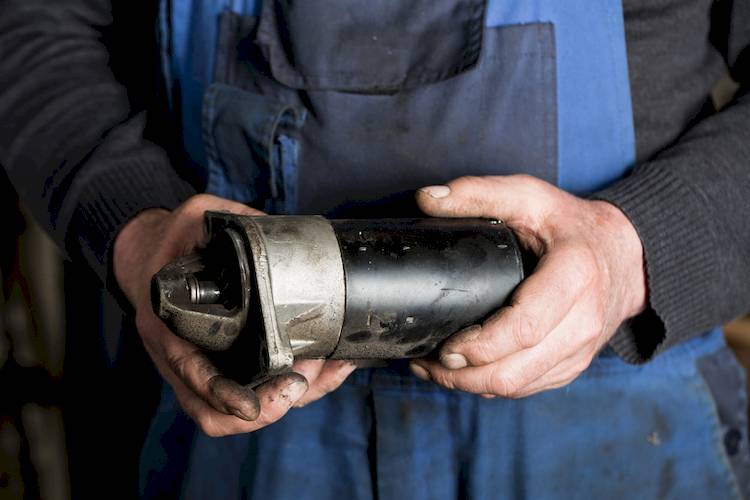

The starter solenoid is an electromechanical device used to shift the starter motor pinion gear to mesh with the engine flexplate or flywheel. When current is supplied to the solenoid ignition terminal, the magnetic windings inside are energized. This creates a magnetic field that pulls the internal plunger, which in turn moves the linkage to engage the starter. The solenoid plunger contact disc also closes the circuit between the battery and starter motor.
Modern starter solenoids are attached directly to the starter motor. In most cases, when the solenoid fails, the entire starter is replaced.
Part 1 of 2: Locate the starter solenoid
In order to safely and efficiently replace your starter solenoid you need a couple of basic tools:
- Free repair manuals
- Jack and jack stands
- Jumper wires or remote engine starter
- Protective gloves
- Repair manuals
- Safety glasses
Step 1: Jack up the vehicle. Jack up the vehicle and support it with jack stands.
Step 2: Locate the starter solenoid. The starter is typically mounted to the bellhousing on the underside of the engine. The starter solenoid is mounted on top of the starter.
Part 2 of 2: Test the starter
Step 1: Locate the starter ignition terminal. Locate the starter ignition terminal. It will often have an electrical connector attached to it and will be the smallest of the starter terminals. It is often referred to as the starter “S” terminal.
Step 2: Attach the jumper wires. First, attach the jumper wire to the starter ignition terminal. Then, momentarily touch the other end of the jumper cable to the battery positive terminal of the starter battery (“B”) terminal.
If the solenoid and starter are working, the starter will engage and crank the engine over. A safer way to perform this test is by using a dedicated remote engine starter. This tool is hooked up the same way but provides a button to push for starter engagement.
- Note: The starter battery terminal has power going to it at all times. Be sure not accidentally ground it while performing the test or injury could result.
Step 3: Lower the vehicle. Once testing is complete and you’ve performed any necessary repairs, remove the vehicle from the jack stands and lower it.
If this sounds like something you’d prefer to leave to a professional, contact a professional technician, such as one from YourMechanic, to replace your starter for you.



